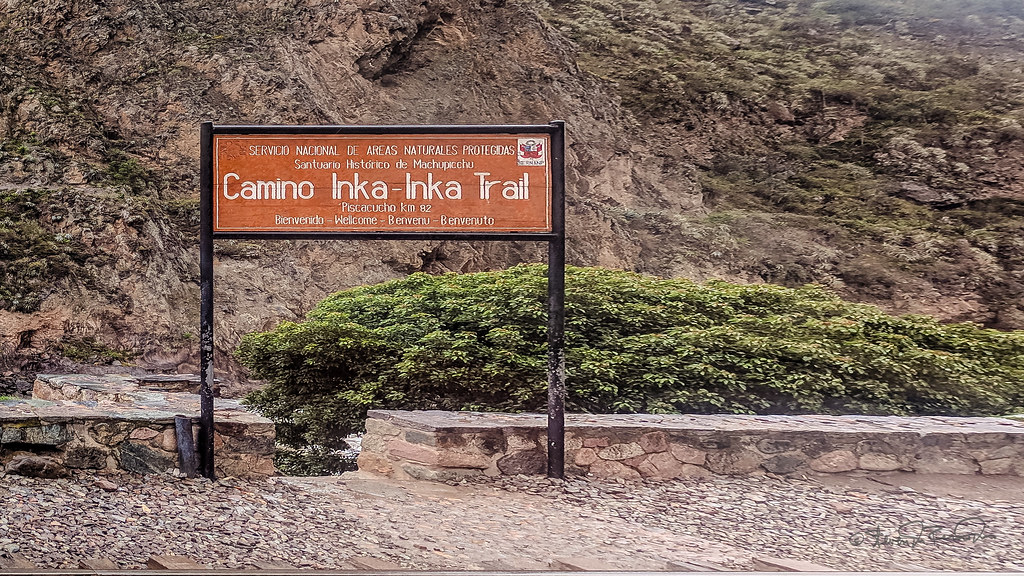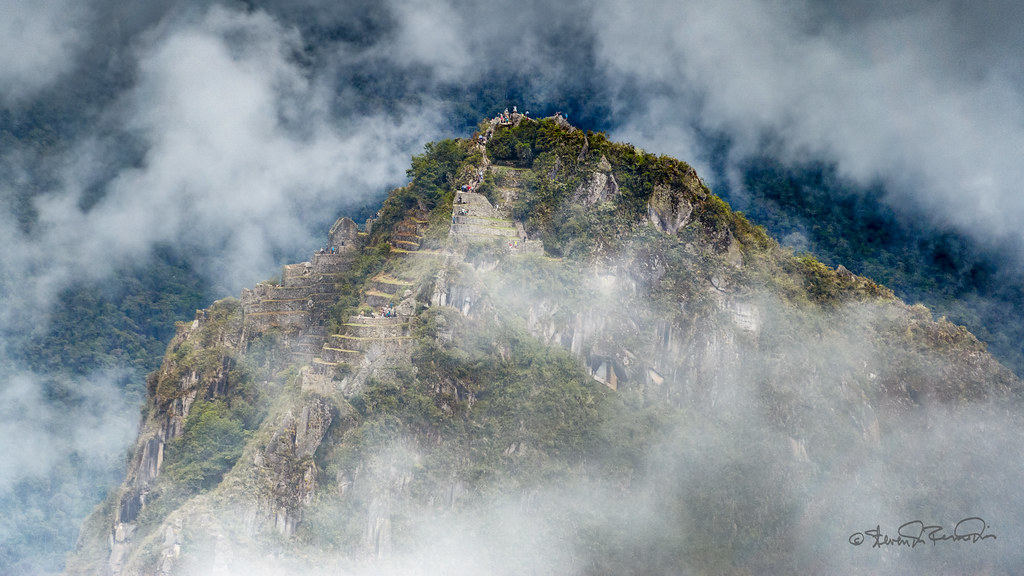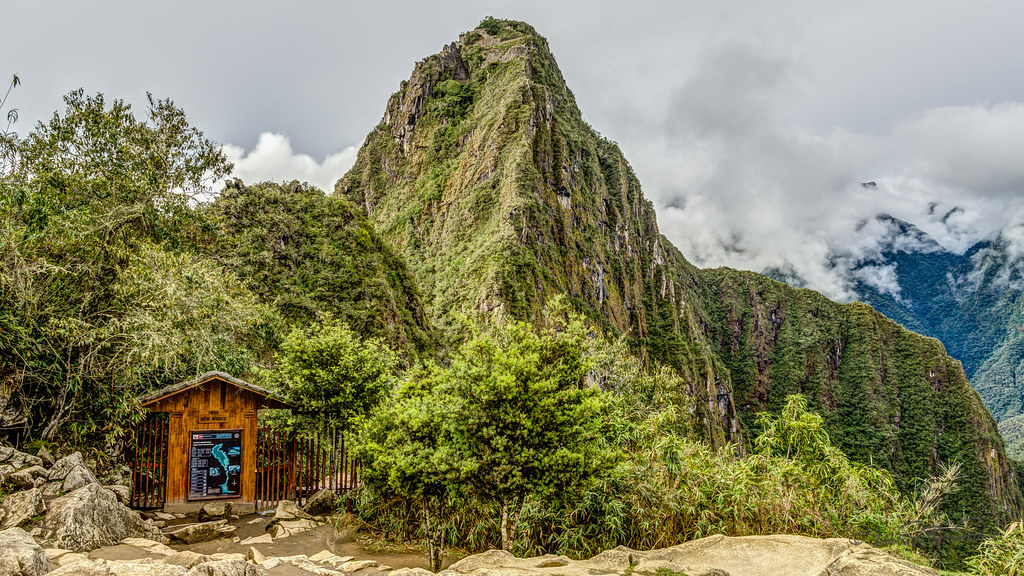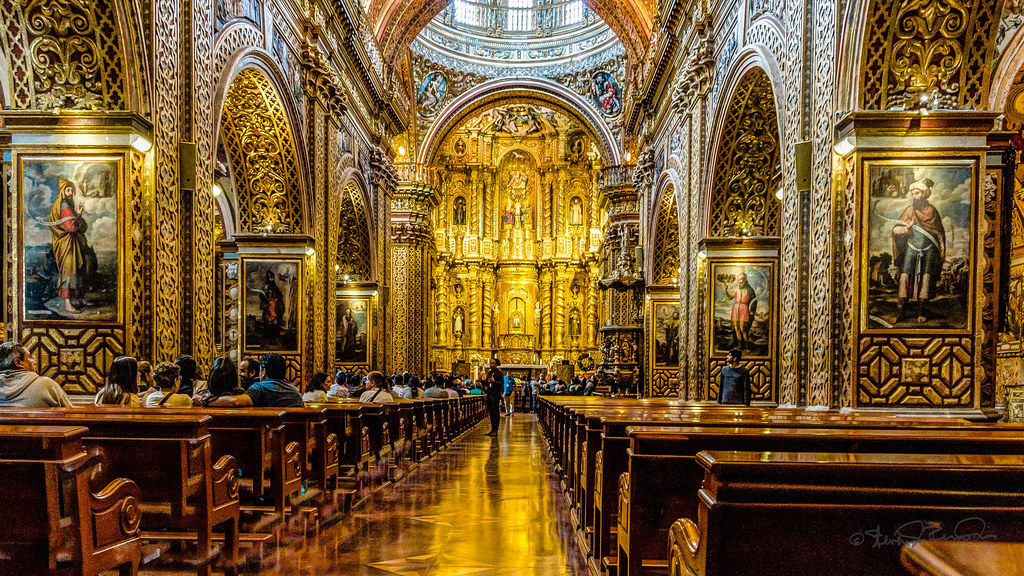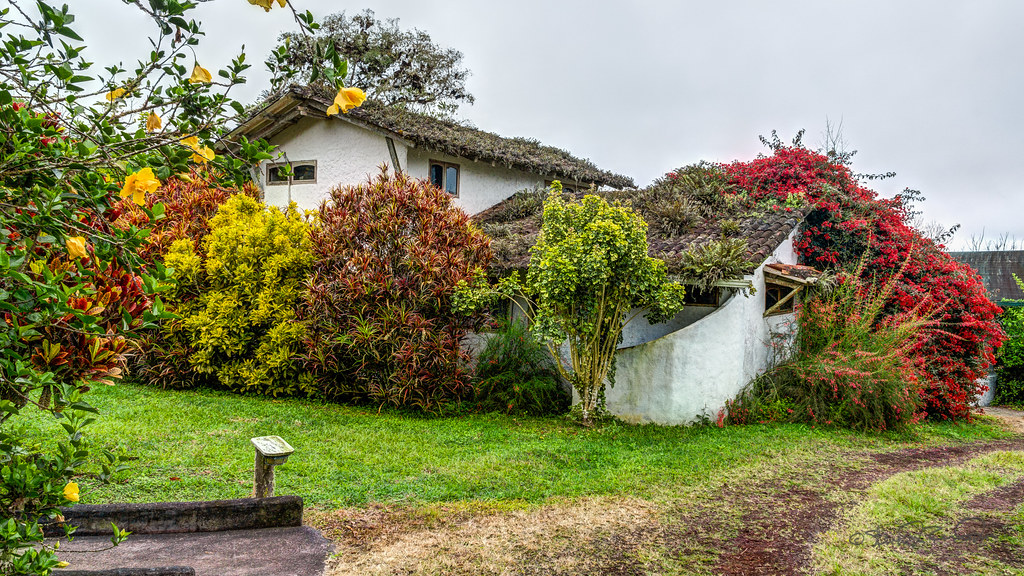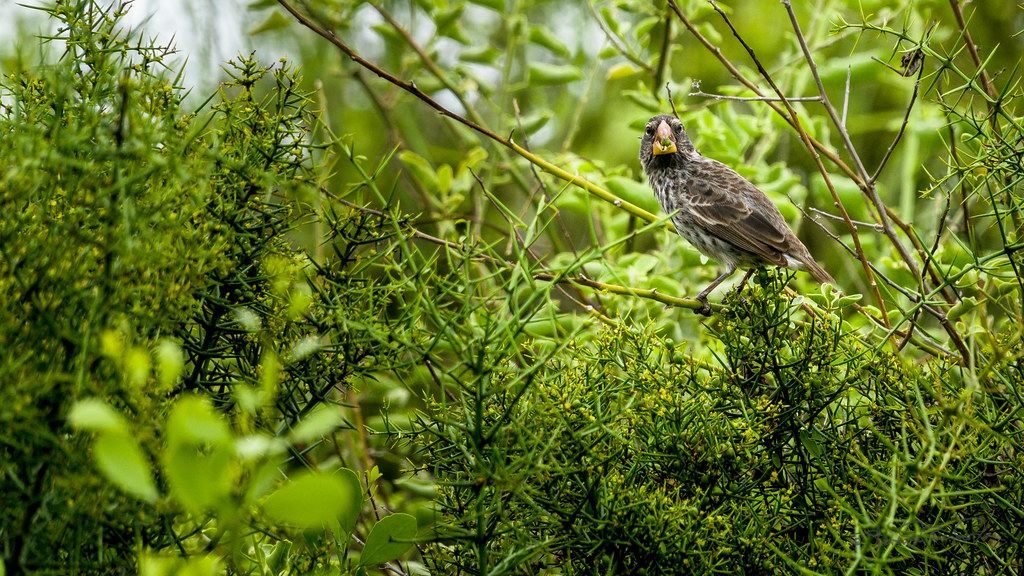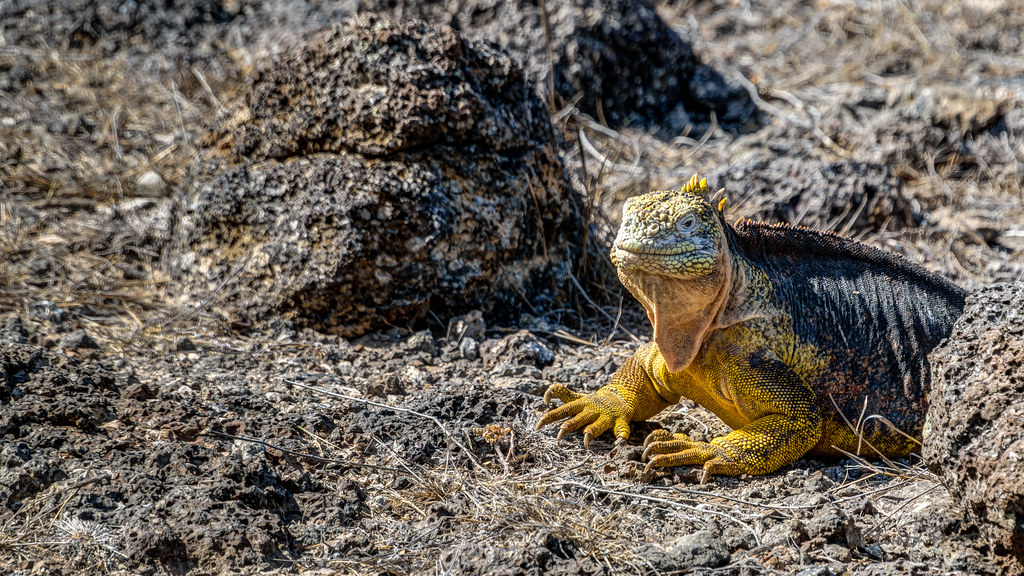Video Slideshow
Following in the footsteps of the ancients on OAT's Machu Picchu & Galapagos tour, we walked among the massive ruins of the "Lost City of the Incas" and experienced Peruvian culture in the Sacred Valley. On Ecuador's Galapagos Islands, we swam in unspoiled coves with friendly sea lions. We found a living laboratory of Darwin's theory of evolution in these "Enchanted Isles."
Lima
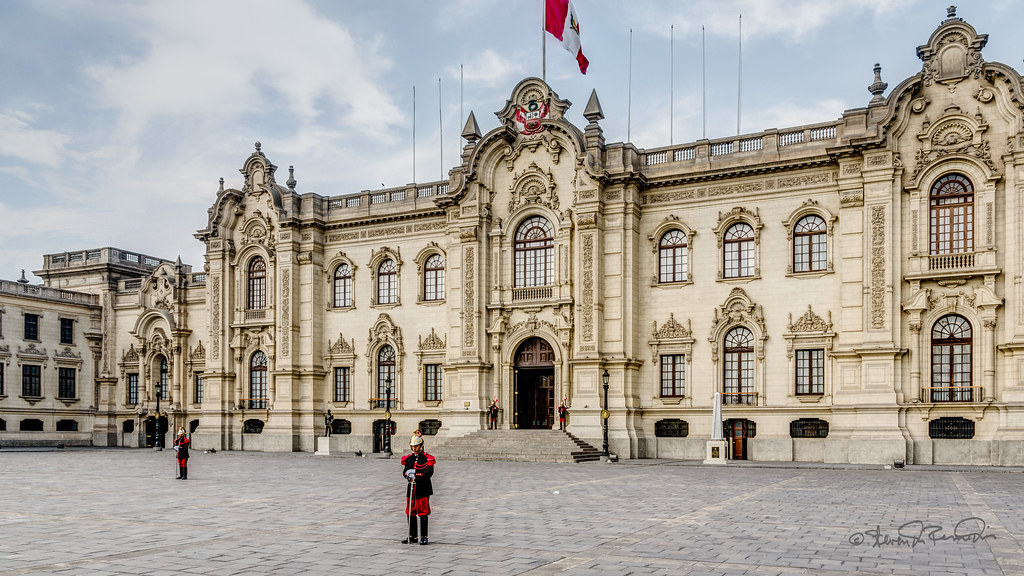
Our first local experience was changing money on the street using a gray-market dealer who is sanctioned by the city. He gives the best rates and gets to keep the commissions.
We explored Lima's streets and architecture (Spanish heritage) from its main square Jiron de la Union to the Lima Cathedral. The old city square (city founded by Pissaro during 5 year Guano War with Chile, Bolivia, Peru. Peru lost 300 miles to Chile; Bolivia became land locked.
Stopped at the San Francisco Church and visited the catacombs below it. They were discovered in 1947 and contain the remains of about 25,000 people.
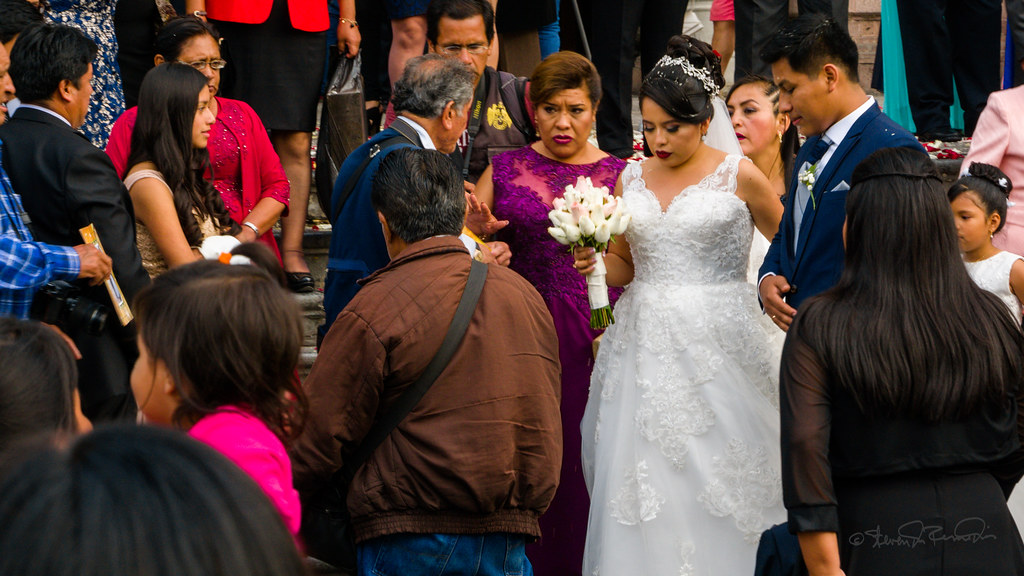

Drove to main square which faces the presidential palace and the Cathedral of Lima. A wedding was occurring at the cathedral and police were cordoning off the square due to an impending protest by strikers. We were permitted to enter and walk around the perimeter (so we couldn't chain ourselves to the central fountain.)
Later we walked through a city park in the Miraflores District; appears to be a sanctuary for cats. Lots of activity because it was Saturday evening.
Cuzco
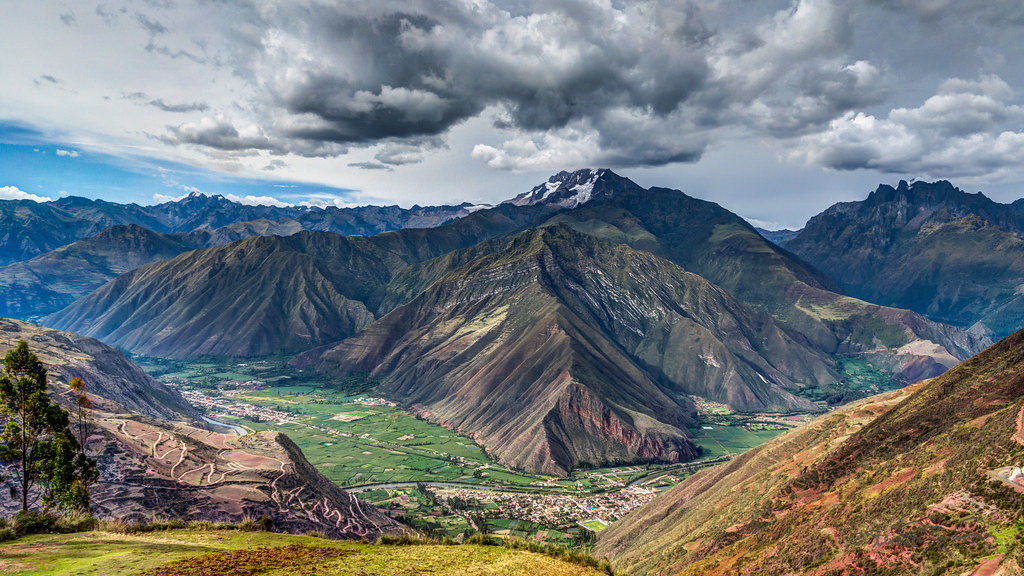
We flew to Cuzco (center of the Inca world and a UNESCO World Heritage Site). There was a delay at airport; temporary evacuation with bomb sniffing dogs. No issue other than waiting an extra hour.
We didn't stay in town, but headed toward Urubamba in the Sacred Valley. We stopped at Chinchero which is a mountain weaving village at elevation of 12,500' (highest point of our entire trip). This village is the site of a 16 century Inca emperor's estate; saw a weaving demonstration by three traditional Peruvian women. Along the way we stopped to see views of the Sacred Valley above Urubamba and tried coca leaves.
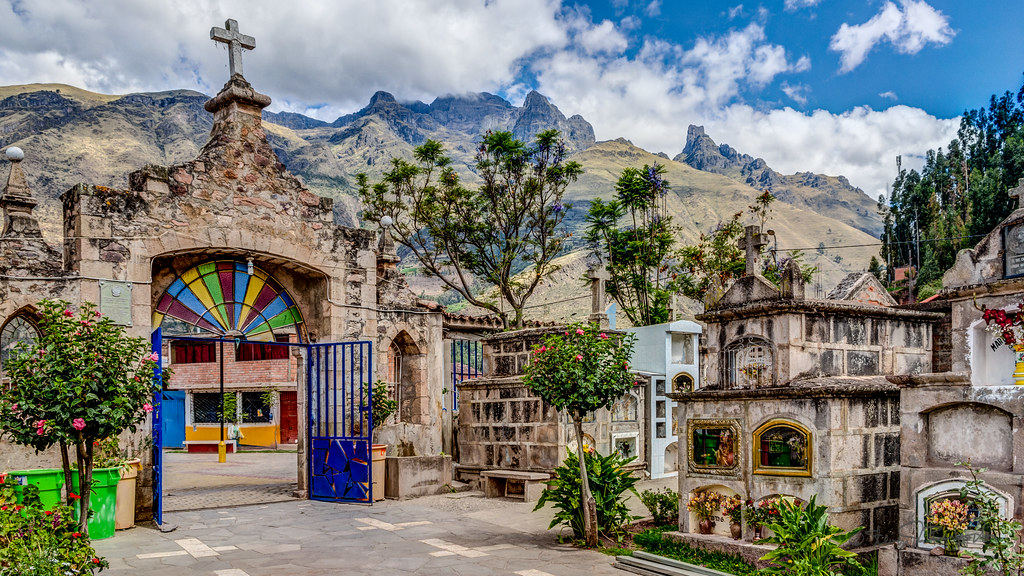
Then we walked the streets near a Mercado. Tried quail eggs made by a street vendor. Bought items in the market for our home visit and learned about the different fruits/vegetables of the area.
Our guide hired several motor taxis (like a tuk-tuk) to take us to a place where a woman makes chicha, a local drink made from corn. During our visit we met a woman who was a victim of Fujimori's sterilization program; she shared her story and answered our questions.
Then we went to the school (as usual, a bit chaotic; visited a 6th grade) where Paul got the kids involved in playing a ball game. From there, we went to a home hosted lunch by Eleonora and her daughters in Urubamba. In the yard, there was a pen of live guinea pigs. We helped with some items of lunch. She then brought out a large tray with two stuffed guinea pigs which are considered a delicacy in Peru. Great soup and stuffed peppers also served. The host's granddaughter was precious while holding a guinea pig drumstick.
Back at hotel, some of us (not Steven) went with Henry to a local famous potters workshop (the man wasn't there but he employs about 50 people so we got a tour and saw his work (I purchased just two round coasters). In the courtyard, there were 4 large beautiful German Shepherds. Afterwards at the hotel, we had a pisco sour demonstration before dinner.
Dinner was in the home of a chef who collects Inca ancient artifacts (museum quality). He and his artist wife have a home where it is part restaurant and part museum with a gallery to purchase art works by his wife). Cool place. Had to pack into a duffle for Machu Picchu for our one night there.
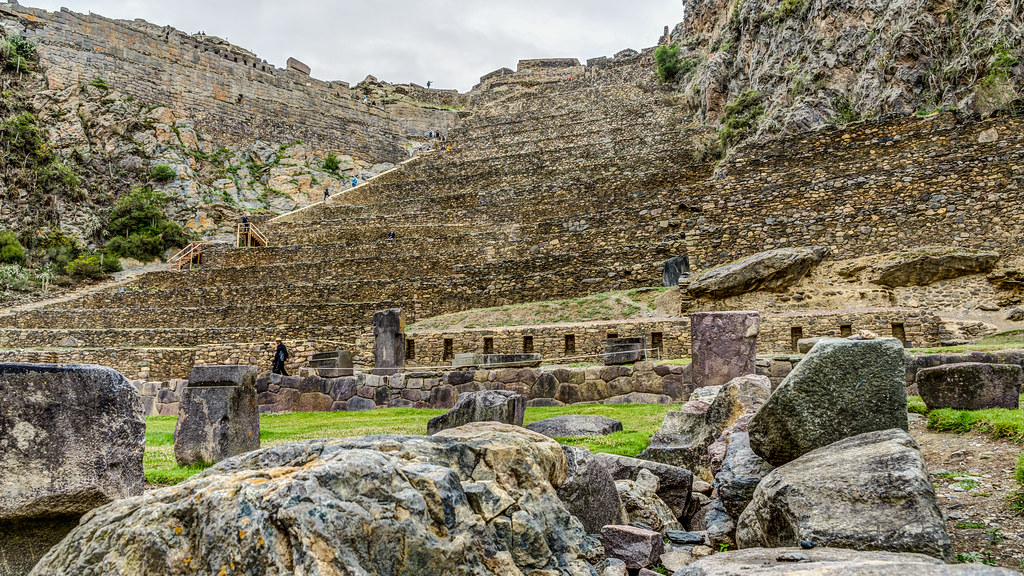
After returning to Cuzco from Machu Picchu by train and bus, we took a walking tour the next day. Saw map of the old town from 1500's that was part of a display actually on the street. The city is Shaped like a Puma! Went to the cathedral Santa Domingo on the square, and then toured the Museum. Walked to the square where it started to rain.
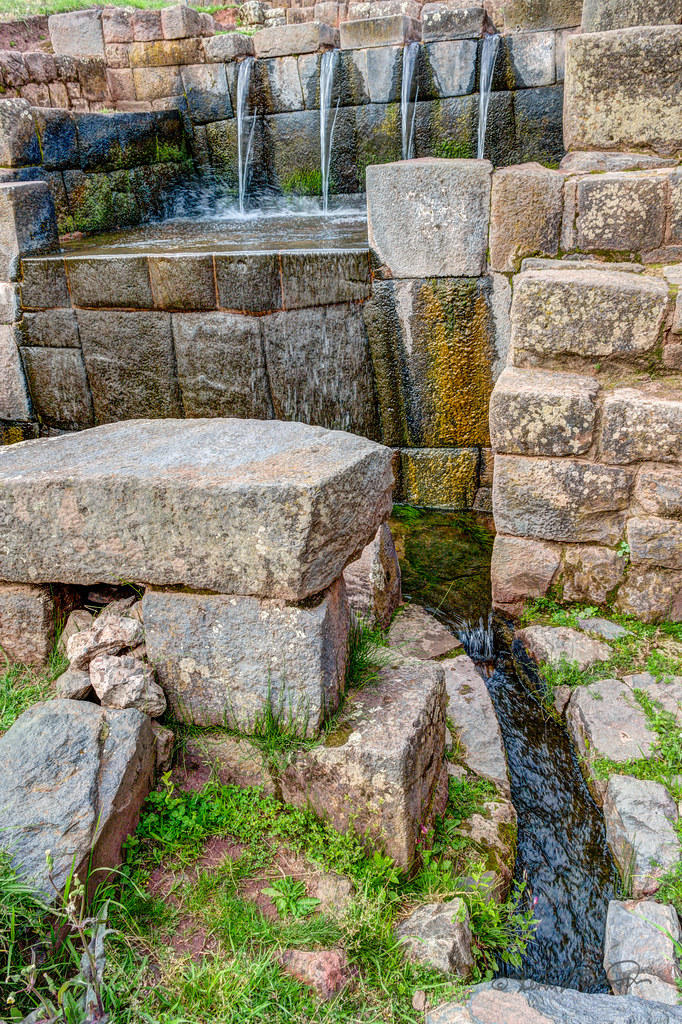
For dinner, we went with Henry by local bus to his favorite pizza place. As we got there, all the electricity in the area went out. Restaurant looked nice with candles all over.
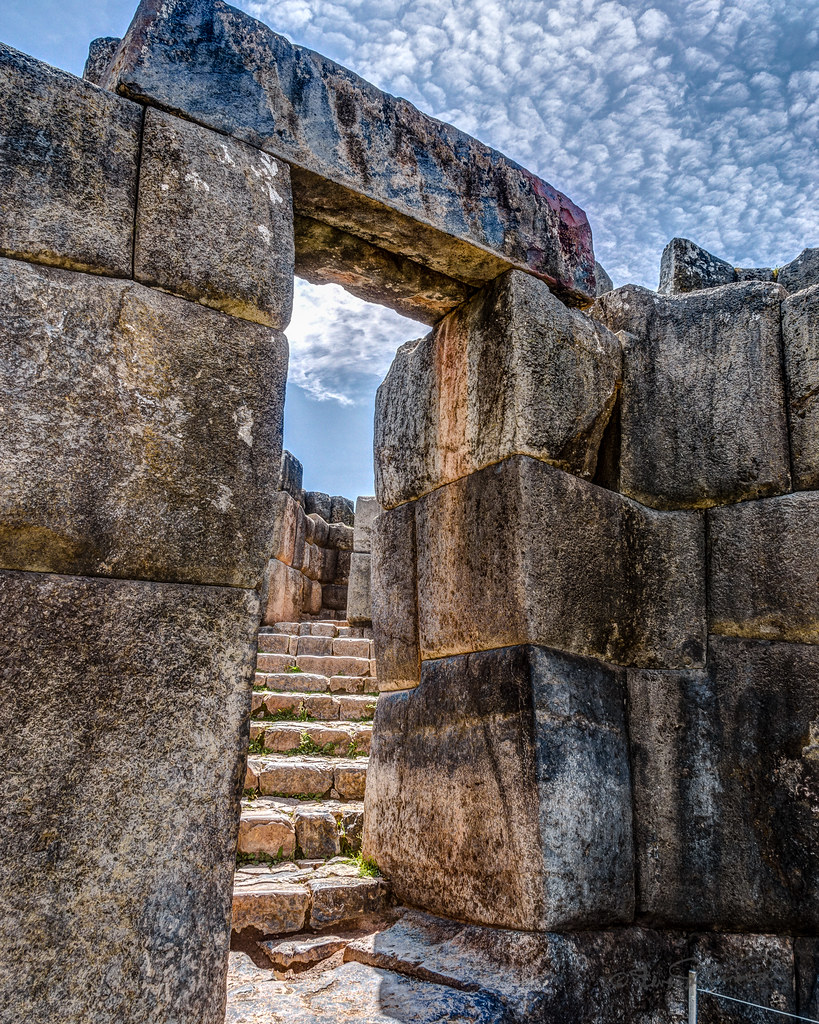
On our last day in Cuzco we visited a hilltop citadel called Sacsayhuamon, It was built with huge stones assembled without modern tools; they fit perfectly together without mortar, even though each one differs in shape and size; some are as large as 125 tons. The site covers a large area with great city views from the top of the ruins.
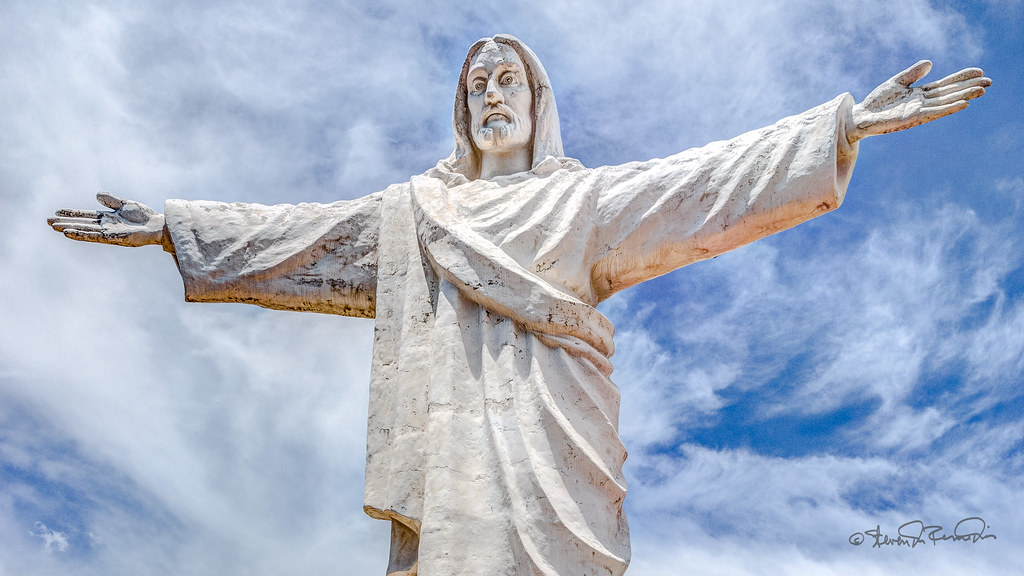
On another hilltop nearby we stopped to look at the large "White Christ" overlooking Cuzco. It was given by local Muslims to Cuzco Catholics in the 1940's. Another archaeological site, Quengo, is nearby and we walked through its ceremonial areas. In a "cave", we saw a stone throne carved between the limestone rocks.
On way back, we stopped at Kenko which was a sacred ceremonial site. An Inca shaman from the highlands gave us each a blessing with special ingredients/materials he uses for the ceremony.
Machu Picchu
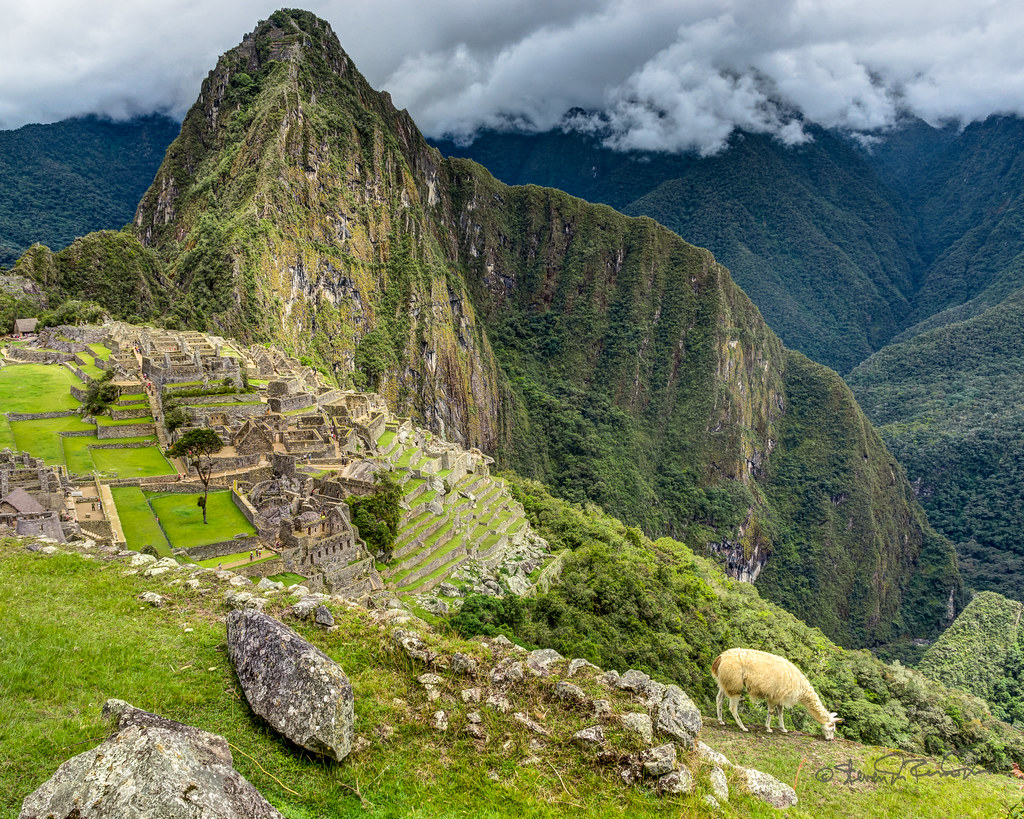
Leaving Ollantaytambo we took a first class train to Aguas Caliente. The train follow the Urubamba river with beautiful mountains and gorges. The road ends about 25 miles before Machu Picchu, so only way there is by train or walking, which many people do.
From the Machu Picchu train station, we walked through a market (no time to stop!!) and we got the park bus which goes up a zig zag road (Hiram Bingham "Highway") for 30 min looking out over very steep valleys and mountains. Beautiful.
Our first afternoon at Machu Picchu allows us plenty of time to tour the site and we were the last group to come down the mountain at 5:30p. Most people visit for the day and take the train back to Cuzco so they tend to leave early in the afternoon. Because we were staying locally, we got to linger later in the day and have the whole place to ourselves for the last hour. Magical!!!
The ruins are so amazing (done within 100 years) and so high up. What a place. The overcast clouds and mist added to the drama and beauty of the scene with the tops of mountains peering through the clouds. Steven was taking pictures near the Temple of the Sun and when he got up from the ground, slipped and hurt his left pinkie. The nail looked horrible and the finger quickly was swollen and purple. Didn't stop him from taking pictures though! Henry did a great job of explaining the history of Machu Picchu. Had a local guide, Joel, join us but Henry did all the explaining.
Leaving at 6:30 am from our hotel, five of us left to visit the Sun Gate. (Steven, Sylvia, Howard, Ken and Ray with Joel as our guide.)
The Sun Gate is 8,923' and 90' higher than Huayna Picchu which has all the very steep steps and is the peak shown behind the ruins. We encountered several groups of hikers coming down from the Sun Gate as we hiked up; and when we arrived fewer than ten people were there. After about an hour, Steven, Joel and Sylvia headed back down the Inca Trail. But before we did, the fog and clouds were starting to clear a bit and there was an opening in the fog like a frame for Machu Picchu and Huayna Picchu.
Joel was our private tour guide for the rest of the morning. Great guide. He took us to the Guard House and was able to use Sylvia's phone to take pictures of us along the way with great views of the main ruins.
Quito
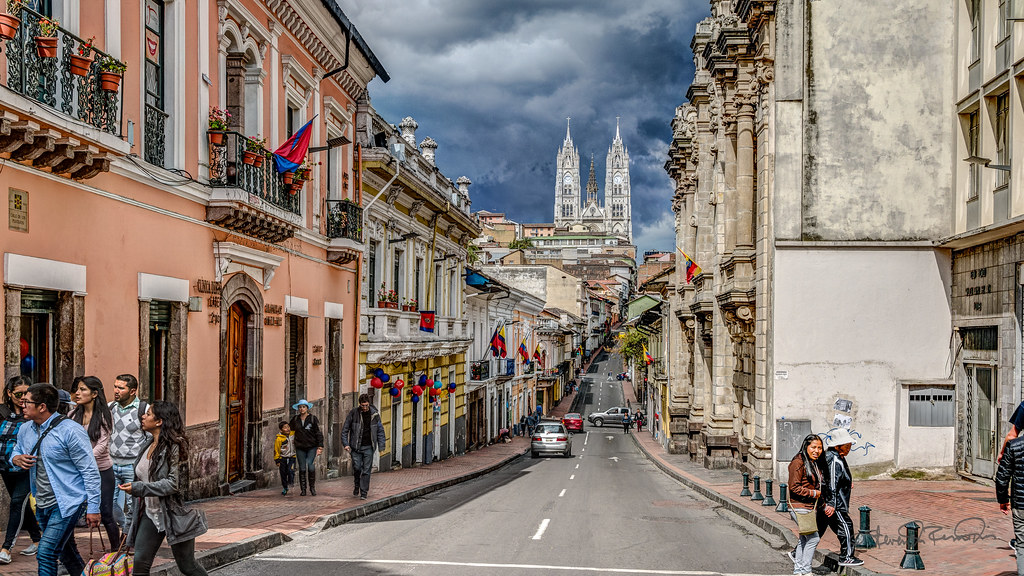
Fernando Zambrano, our OAT guide and Galapagos naturalist, met us at the Quito airport. Quito has two million people and is very clean and modern. It's long (30 mi) and narrow (3 miles).
Unlike Cuzco, few people here dress in traditional ways. The Festival of Independence of Quito was occurring over the past few days and because it was also Saturday evening, the area was hopping! And noisy and they had disco buses filled with dancers and blaring music into the late night!
Our city tour was led by a local guide, Leonora who was very good. She told us that Quito is the second highest capitol in South America. We visited the old part of town with its many colonial buildings which had fallen into disrepair but are now seeing a new trendiness. We ended up at the Ecuadorian Inca Museum which was simply fabulous. They use a mix of artifacts and replicas to create an experience that feels very genuine.
We didn't feel the 6.5 earthquake the next morning, but Steven thought someone was knocking on the door. Our tour today took us to a large city food market which was clean and bright. Leonora introduced us to cuero, the hardened skin of a roasted pig, which is now a new vice for both of us.
Then we went to the Basilica of Quito with a view of Colonial Town from the top, and then to Campania de Jesus Church that had it's bell tower destroyed in 1999 quake and the bell taken down and put on display.
One of the highlights was the Church of San Francisco that was all done in gold; everywhere you looked. Photographs are not allowed but we've never seen anything like it ("poor Sienna"!!).
As we walked in the streets, Leonora and Fernando arranged for an 'interview' with a street prostitute (prostitution is legal in Ecuador). That was a new one for us! Then we continued our walk and talked to a tourist policeman.
After lunch, a young man (who used to be a pickpocket in the area) was selling his small oil paintings. Bought one as a gift for Brian/Alex. Steven went with Tony, Bob Z and Ken via taxi to the top of the mountain via cable car. It is at 12,200' and is supposed to have a great view but it was too cloudy.
Galapagos
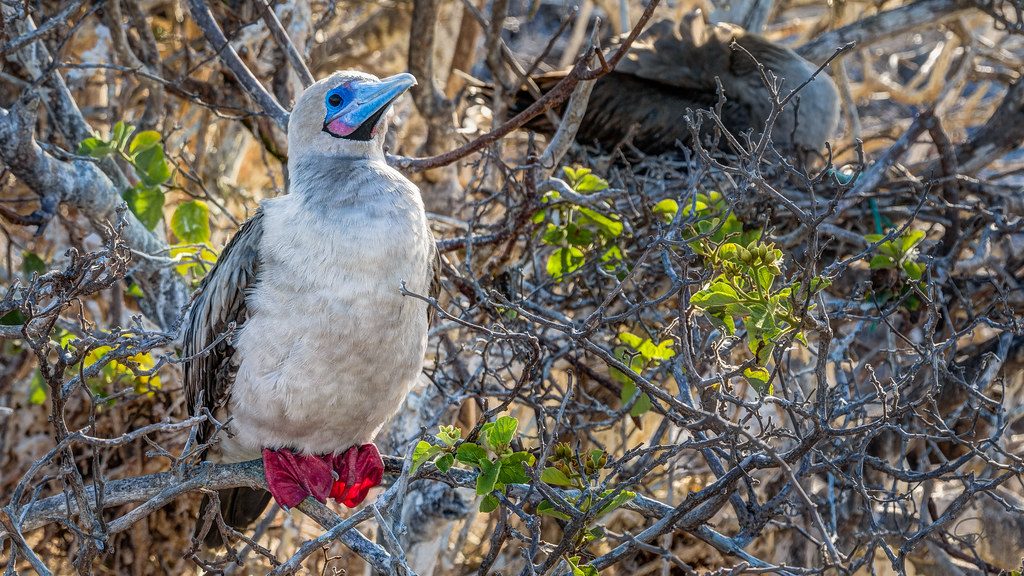
When we got to Baltra, there was no OAT bus due to some miscommunication. Bus finally did arrive to drive us to other end of island to catch barge to Santa Cruz. On way, we stopped to see a large sinkhole; started to rain. When we took the barge we could see the remains of the Cachalote which recently sank; this was the boat Steven was on when he was in the Galapagos in the 1980's.
At Santa Cruz Island, we made another stop for lunch at a tortoise sanctuary La Rancho El Manzanillo. Walked through the area where you had to watch where you stepped. Those large boulders were tortoises! Great to see them in their natural environment, wallowing in the mud. Also stopped at a spot on the property to see how they make sugar cane moonshine with a small outdoor still. They convert the sugar cane the old fashioned way (the 3 ladies tried to move the large cane press together and it was very difficult. Then they used a donkey!).
Checked into our hotel (eco-lodge) in the middle of no-where. We again had the best room. Near the eating area but upstairs in the back; complete with giant spiders!!! We were the only group there. Also, owners of the lodge are also owners of the Cachalote who were in Victoria, BC trying to buy another boat! Bus took us all to town (Puerto Ayora, the largest town in the Galapagos) where we walked through the fish market (Boats just in). Lots of pelicans; definitely a beach town; got a few T-shirts. Bus driver left for the evening so Fernando arranged for taxis to take us back to the lodge for dinner. .After breakfast, we went to the Charles Darwin Research Station for a history of the wildlife on the islands. They had the largest tortoise (Lonesome George) stuffed and in a environmental chamber. Also saw Super Diego (live) who fathered numerous (over 800?) tortoise.
Boarded the San Jose which will be our boat for the islands. Had lunch on board. We have the upper deck front room (#8 with the 'matrimonial' bed!). Decided to leave the room in upper deck and hope that my seasickness patch and wrist bands would help which they did. I cut the patch in half and since it is good for 3 days, I only needed the one patch. Used the wrist bands and was prepared with ginger tea and candies but didn't need them. In spite of a very rough first night, I did not get seasick at all.
Wet suits were available to rent for $20 for the entire time's worth it although I didn't go snorkeling until the final day. Went to North Seymour Island for snorkeling. I went in the zodiac but didn't go into the water; getting a cold so didn't want to push it. Saw lots of birds. Nice sunset ride back to the boat. Weather moderate€”perfect. Overcast but no bugs. Took zodiac to Darwin Island beach for a short hike on the beach where buccaneers used to hang out. Lots of birds and sea lions. Later, those that wanted to snorkel went back near this beach. Lunch and then another snorkel later but in deeper water (30 ~ 40 feet). (I didn't do either and Steven did only the first one; water murky). Night was relatively smooth last night. Took 10.5 hr to go from Tower (Genovesa) Island to Isla Plaza (south end).
Hiked (saw land iguanas, sea lions with lots of babies). On board, we had a talk about the beginning of the Galapagos Island and how they formed. Also, chef gave a demonstration on how to make ceviche. After lunch we sailed to Santa Fe Island. Afternoon snorkel I did. Turns out to have been best day to snorkel because of clear water. Saw 5 mantra rays, several sea lions, two tortoise, a lots of different fish. I did ok in the water; no problems! Took zodiac to Santa Fe Island for a hike, hawks, iguanas, sea lions/babies. On boat we had a lesson in making a 'hot' cocktail. Not great!
After dinner, we celebrated Howard's 70th birthday with a big cake. Last night rocky but nothing like first night. At 7:00 am we went by Kickers Rock (actually two large rocks in the water). Boat went around the rocks so we could see from all sides. Landed at Isla San Cristobel where the airport is located. Looks like a typical beach town. Had about 1.5 hours to walk around (and buy!). Found the T-shirt I wanted (first one I got was an XS. Steven got the same shirt. I liked it so much that I wanted to find it in a Med. Finally did find it but had to pay $8 more!).
* Some images are from a trip in 1986


